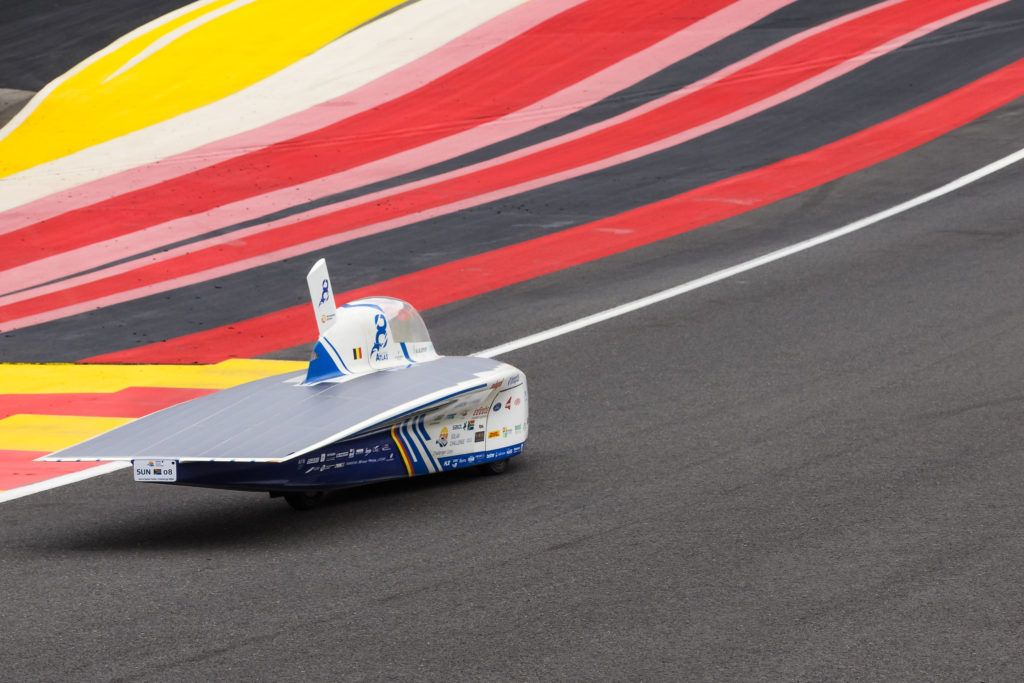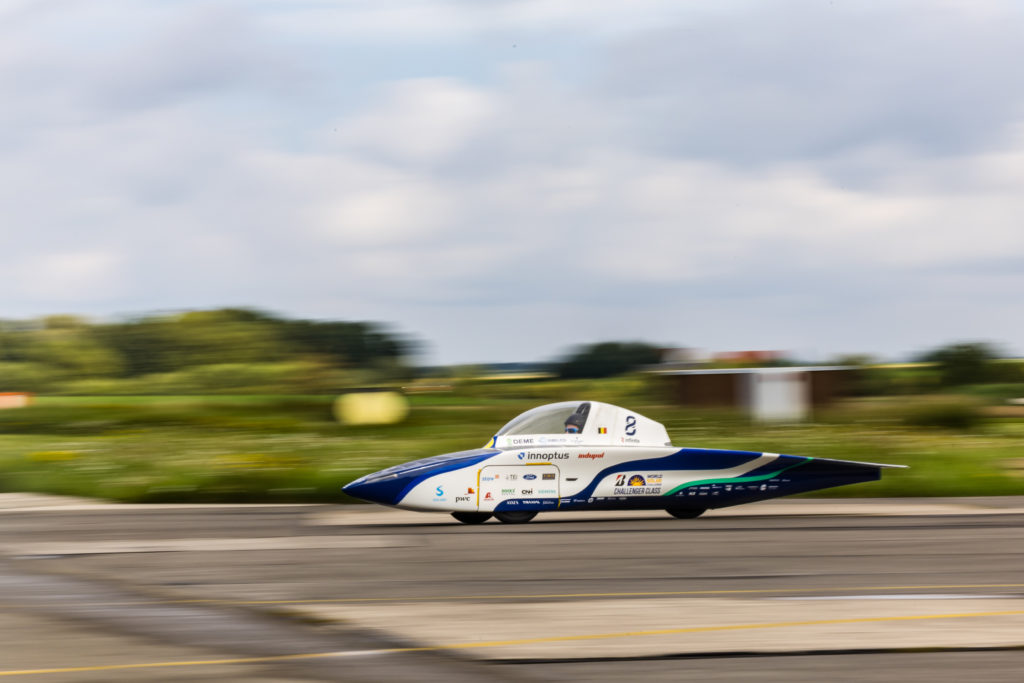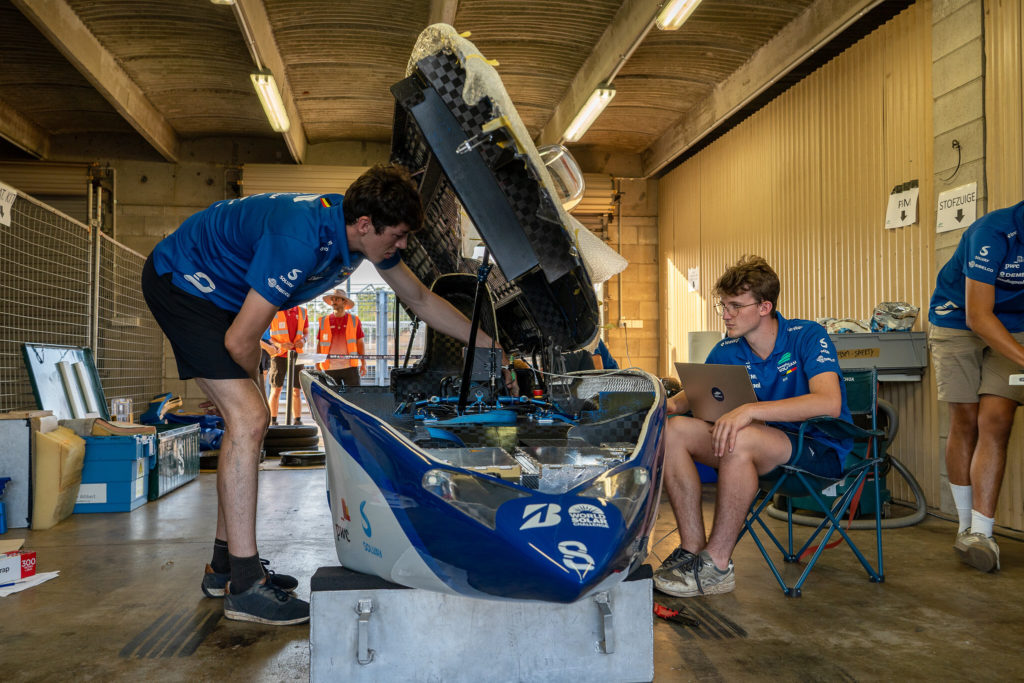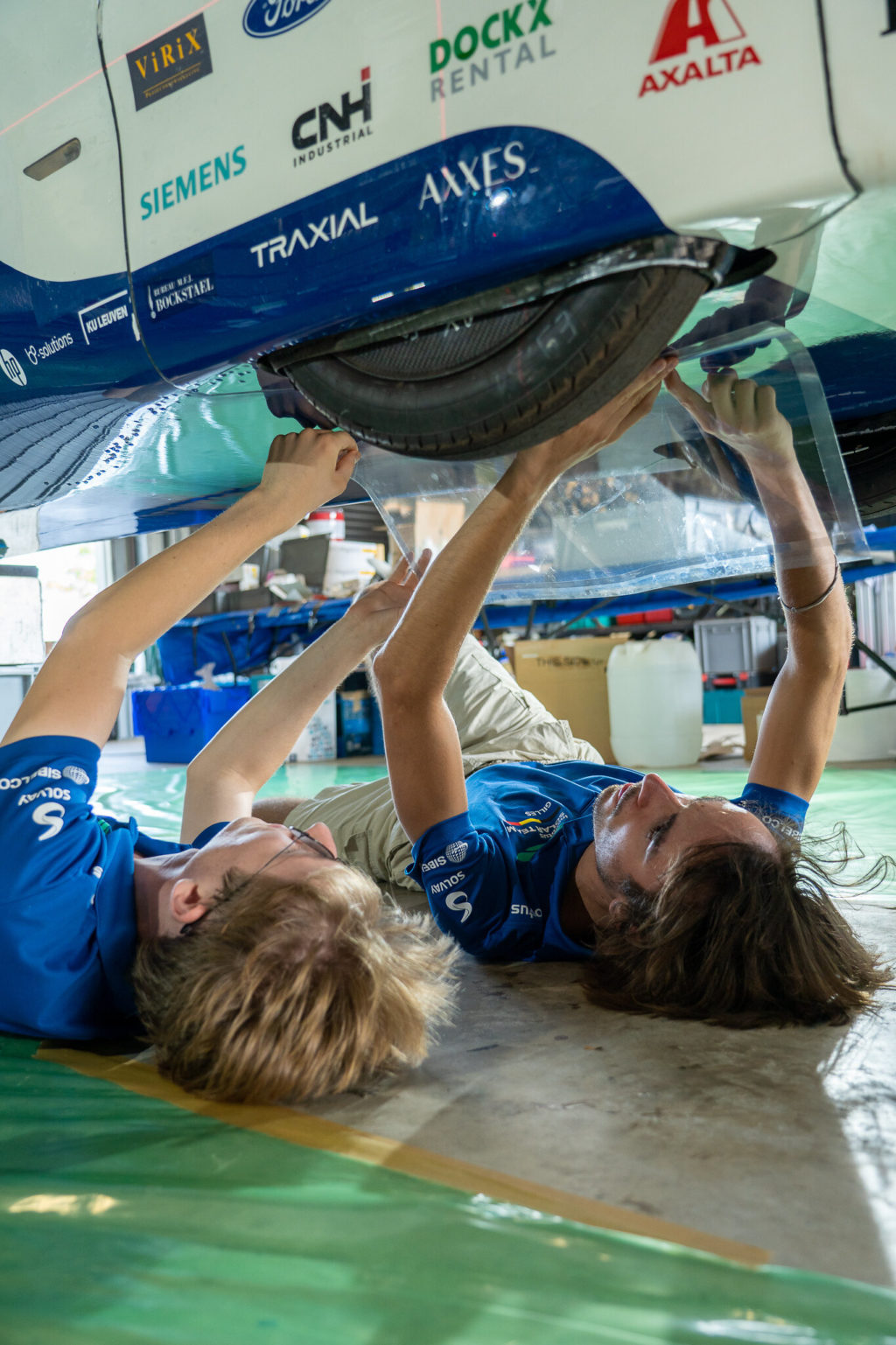Your web browser is out of date. Update your browser for more security, speed and the best experience on this site.
A strong display of solar power with the assistance of Axxes.
Deep in the Australian outback, a race with futuristic cars takes place every two years. In the Bridgestone World Solar Challenge, solar-powered vehicles compete for the title, currently held by the Belgians. And that's where co-pilot Axxes plays an important role...
When you think of racing and the Low Countries, you probably think of Max Verstappen or the Grand Prix at Spa-Francorchamps. But have you heard of the Bridgestone World Solar Challenge? During this competition, engineering students from around the world compete with their own designed solar cars. After years of Dutch dominance, the Belgian team claimed first place in 2019. Justice served!
After four long years - with no race in 2021 - a new edition is finally taking place. The Belgian team is ready to defend the title in the Australian outback! To lead the Innoptus Solar Team to victory again, the IT consultants at Axxes have developed a navigation app. Through this blog, we'll keep you informed about the entire journey, including the race and the collaboration.

Meet the team
The Innoptus Solar Team is a Belgian team of engineering students based in Leuven who aim to design the most innovative and efficient solar car in the world. Since 2004, the team has built a new solar car every two years.
This year, they launched their tenth Belgian solar car: Infinite. The motor and battery pack have been greatly optimized, allowing the vehicle to travel about 900 kilometers. Thanks to an improved electric motor, the Infinite also reaches a top speed of 170 km/h.
The solar cars of the Innoptus Solar Team are a perfect example of what is possible with renewable energy, innovative techniques, and a dedicated team. A mission that we at Axxes, of course, fully support.

The Bridgestone World Solar Challenge
For three decades now, the Bridgestone World Solar Challenge in Australia has been welcoming student teams from all corners of the globe. In this race, the boundaries of technological innovation are pushed, as only vehicles powered by solar energy are allowed to participate.
The race itself covers a distance of 3021 kilometers, cutting through the scorching plains of the outback. This year, the competition takes place from October 22nd to 29th, with teams racing from Darwin to Adelaide.
Putting an end to the competition
Although the Belgians are the favorites to win, they will first have to deal with the top teams from places like Delft and Aachen before they can claim victory. They will certainly not make it easy for our national team, but if the Innoptus Solar Team manages to cross the finish line first again, it will mean the second consecutive victory for the Belgians.
The navigation app
The Infinite will certainly be a game-changer for the Innoptus Solar Team, but they also have an extra ace up their sleeve: the navigation app developed by Axxes. Every racer needs a strong co-pilot, and we are delighted that we, at Axxes, can fulfill that role!
The app created by our consultants provides real-time insights during the race, identifies all obstacles in advance, and brings the pilot of the Infinite closer to victory. On a user-friendly map displaying the entire route, the team can easily add various notes, such as the solar car of another team, an overtaking lane, or a road hazard. Axxes' navigation app is therefore crucial during the race to keep everyone informed. This ensures that every team member always knows where everyone else is, even when visual contact is no longer possible.
For this edition of the Bridgestone World Solar Challenge, we have thoroughly optimized the app and added some extra tweaks and functionalities. At Axxes, we are incredibly proud that our expertise and skills can contribute to this fantastic initiative that embraces the technology of tomorrow.

Firebase
Firebase App Distribution
For testing during development, we were able to use the Android emulator built into Android Studio. To quickly receive feedback, we also made use of Firebase App Distribution. With each push to the main branch, a new version of the app was created automatically and uploaded to Firebase. This allowed us to download this version on our own smartphones and quickly get input from the client.
Firebase Realtime Database
We used Firebase as a sort of backend/database. With their realtime database, we were able to easily transmit rapidly changing data. Additionally, by utilizing the Firebase library built into Android, data was uploaded and fetched in real time, facilitating live data exchange (such as the location of chase cars or solar cars).
Another major advantage of the realtime database is that it also works in offline mode, minimizing the amount of data exchanged, and eliminating the need to send a large amount of data back and forth.

Android development
We started the development with a solid foundation that we can easily expand upon. We followed the SOLID principle that was taught to us during the Axxes traineeship. We decided to decouple the app from various features, such as zoom strategies, icons, and map overlays. For the structure, we opted for a separation by type. Because the app is relatively small, we kept everything within one module. This also reduced complexity.
The app itself is built with HILT. HILT is a Dependency Injection library that helps in easier linking of services using annotations.
Important Features
One of the most challenging aspects was ensuring that route calculations are performed efficiently. The calculation starts by finding the closest point from the current position. Then, we check if this point is in front of or behind the device, before examining the further route. With each location update, this is recalculated, ensuring that it is fast and battery-saving.
The app must also provide a detailed map of the weather. Throughout the day, another application from the Solar team sends different photos for this purpose. The application itself must then display these at the correct location. We achieved this by adding an extra layer to the map. For user-friendliness, sliders were implemented to change the transparency, as well as to choose the date and time of the weather if a photo was available.
At Axxes, we also find it very important to give the application a professional look, so we added custom animations when opening and closing the Bottom Navigation. Additionally, care was taken to ensure smooth transitions with each navigation. The main design is clear and easy to use with one hand. The main screen is the map, which defaults to the user's location. At the bottom, the pop-up menu can be opened with swipeable views for all important dashboards to customize the map according to personal preferences.

Firebase Cache
Another important feature was that all data fetched from Firebase could be cached on the device itself. Additionally, we also provided an offline version of the map. Here too, user-friendliness was a priority. In the pop-up menu, there is a tab dedicated to caching the map. Via sliders, the user can set the zoom levels to cache. Depending on how accurately you want to do this, it may take some time. Caching can be configured in the 'Settings'.
During the Solar Race, the solar car is certainly not the only vehicle on the road. Each team is accompanied by a complete convoy. This includes a lead car and 2 follow-up cars. These 3 vehicles use the app to easily visualize significant developments during the race and to determine further strategic decisions. This led to one last important feature: all simultaneous users can be seen live on the map with their cars. Someone who starts the app can assign themselves to a specific vehicle. The other users of the app will then see the icon of that vehicle always at the location of the smartphone of the assigned user. This way, the team always knows where everyone is in case visual contact would no longer be possible.

Race Preps: Static Scruteneering
The Innoptus Solar Team is currently undergoing static scrutineering (technical inspection of our car). So far, everything is going well! The initial checks have been completed, and no issues have been identified thus far. Hopefully, we will continue to collect the green checkmarks!

Race Preps: Dynamic Scruteneering
Today, the Innoptus Solar Team completed the first part of the dynamic inspection. The second part of the dynamic inspection will continue tomorrow with a slalom. This morning, they practiced for the last time at Hidden Valley Raceway for the qualifying round that determines the starting position. Tomorrow, they will test the Infinite for one last time on Gunn Point Road to ensure it is in optimal condition for the qualifying round on Saturday and the start on Sunday.

Qualification
A new record time has been set in the qualification round for Belgium! Thanks to this incredibly fast time, the team will start on day one in second place. The team spirit is high, and they are diving in with full enthusiasm!

DAY 1
The team was the first to start. After the start, we were able to quickly overtake the first team. On day one, they are still in first place, and we are heading towards our second checkpoint of the day. They have already been able to use their secret weapon, the fin, several times to gain extra speed and save energy. This should provide a competitive advantage, but we'll have to wait until the end of the race to see. They ended the day in first place and are extremely pleased with that. The car is in tip-top condition, and the team is standing strong. Hopefully, they can continue this trend tomorrow.

DAY 2
In Australia, the team has already passed two checkpoint stations and is still leading the race. At the moment, they are further extending their lead. Even the organizers did not expect them to go so fast, so they had to adjust their schedules for checkpoint stops. As a team, they are very satisfied with how things are going now. However, today they are dealing with smoke from nearby bushfires. This makes it a bit more challenging to predict incoming energy. As a result, they must closely monitor their strategy and make adjustments as needed. On day two, the team is still holding onto the first-place position in the ranking. On day three, they anticipate a lot of wind, which means their "secret weapon," or their fin, will come in handy!

DAY 3
The team is still leading the race! Due to the changing cloud cover, they have to adjust their strategy by varying their speed to try to stay in the sun as much as possible to maximize our incoming energy. The gap between the Innoptus Solar Team and the Twente team is getting slightly smaller, but we have confidence in our strategy.

DAY 4
The Twente team passed us today, allowing them to gain a few minutes. Currently, they are only 19 minutes behind us. Along the way, the team had to perform our first pit stop procedure after a wheel hatch came loose due to the wind. Fortunately, they only lost a minute with this stop. They were well-prepared for this situation as they had practiced these scenarios several times. At the checkpoint in Port Augusta, the Twente pursuer was already 30 minutes behind the Infinite!
They ended the day with a 39-kilometer lead and are determined to give their all in the final days!

DAY 5 - The finish
WORLD CHAMPION! The Innoptus Solar Team is the first team to cross the finish line in Adelaide! Congratulations from Axxes to the amazing team!
Bookmark this page, because once the race kicks off on 10/22, we'll provide daily updates on how the team is progressing in the race!
Curious about more Axxes Connect initiatives?




